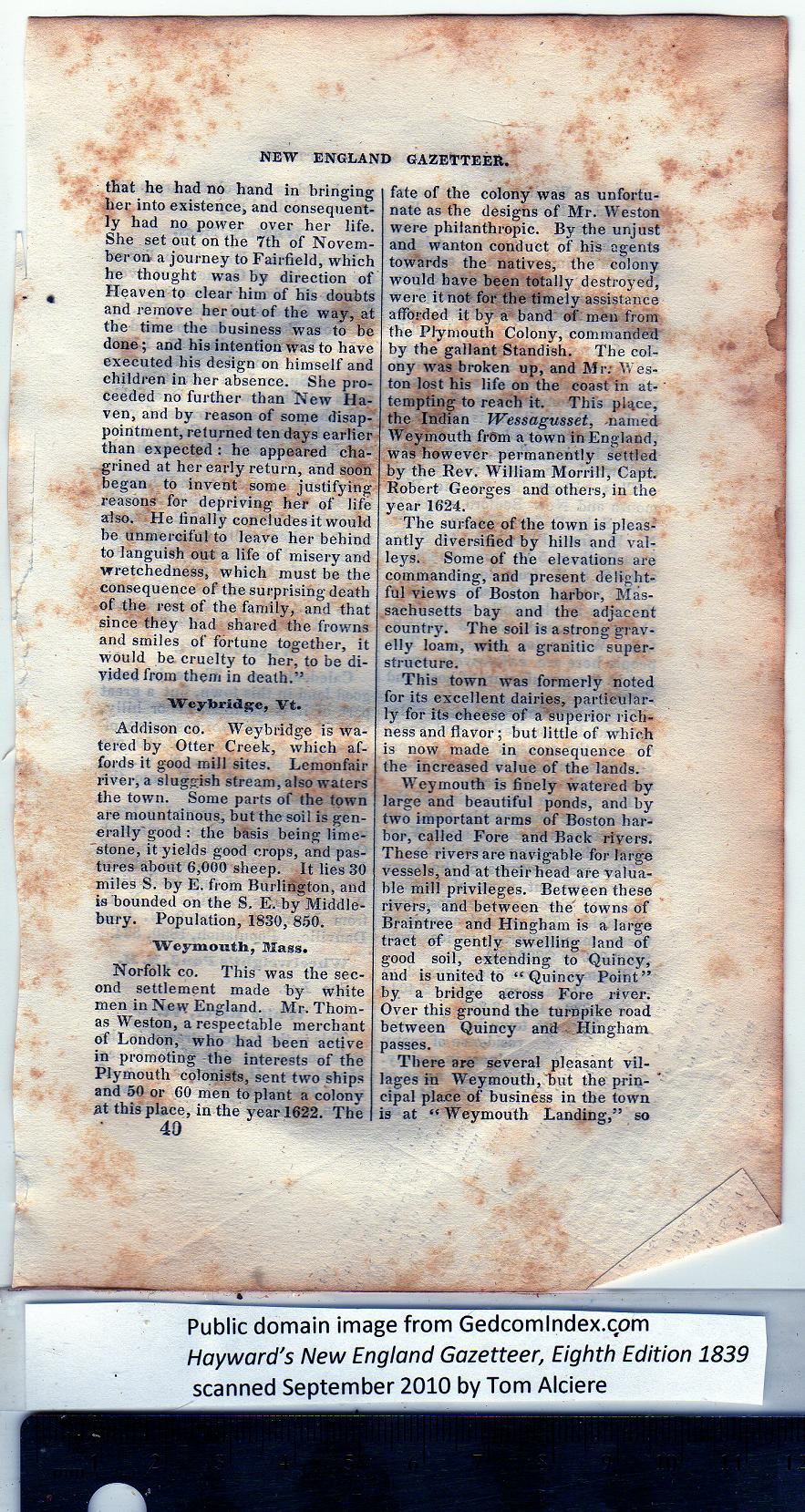|
that he had no hand in bringing
her into existence, and consequent-
ly had no power over her life.
She set out on the 7th of Novem-
ber on a journey to Fairfield, which
he thought was by direction of
Heaven to clear him of his doubts
and remove her out of the way, at
the time the business was to be
done; and his intention was to have
executed his design on himself and
children in her absence. She pro-
ceeded no further than New Ha-
ven, and by reason of some disap-
pointment, relumed ten days earlier
than expected : he appeared cha-
grined at her early return, and soon
began to invent some justifying
reasons for depriving her of life
also. He finally concludes it would
be unmerciful to leave her behind
to languish out a life of misery and
wretchedness, which must be the
consequence of the surprising death
of the rest of the family, and that
since they had shared the frowns
and smiles of fortune together, it
would be cruelty to her, to be di-
vided from them in death.”
Weybridge, Vt.
Addison co. Weybridge is wa-
tered by Otter Creek, which af-
fords it good mill sites. Lemonfair
river, a sluggish stream, also waters
the town. Some parts of the town
are mountainous, but the soil is gen-
erally good : the basis being lime-
stone, it yields good crops, and pas-
tures about 6,000 sheep. It lies 30
miles S. by E. from Burlington, and
is bounded on the S. E. by Middle-
bury. Population, 1830, 850.
Weymouth, Mass. |
Norfolk co. This was the sec-
ond settlement made by white
men in New England. Mr. Thom-
as Weston, a respectable merchant
of London, who had been active
in promoting the interests of the
Plymouth colonists, sent two ships
and 50 or 60 men to plant a colony
at this place, in the year 1622. The
fate of the colony was as unfortu-
nate as the designs of Mr. Weston
were philanthropic. By the unjust
and wanton conduct of his agents
towards the natives, the colony
would have been totally destroyed,
were it not for the timely assistance
afforded it by a band of men from
the Plymouth Colony, commanded
by the gallant Standish. The col-
ony was broken up, and Mr: Wes-
ton lost his life on the coast in at-
tempting to reach it. This pUce,
the Indian Wessagusset, named
Weymouth from a town in England,
was however permanently settled
by the Rev. William Morrill, Capt.
Robert Georges and others, in the
year 1624.
The surface of the town is pleas-
antly diversified by hills and val-
leys. Some of the elevations are
commanding, and present delight-
ful views of Boston harbor, Mas-
sachusetts bay and the adjacent
country. The soil is a strong- grav-
elly loam, with a granitic super-
structure.
This town was formerly noted
for its excellent dairies, particular-
ly for its cheese of a'superior rich-
ness and flavor; but little of which
is now made in consequence of
the increased value of the lands.
Weymouth is finely watered by
large and beautiful ponds, and by
two important arms of Boston har-
bor, called Fore and Back rivers.
These river3 are navigable for large
vessels, and at their head are valua-
ble mill privileges. Between these
rivers, and between the towns of
Braintree and Hingham is a large
tract of gently swelling land of
good soil, extending to Quincy,
and is united to “Quincy Point”
by a bridge across Fore river.
Over this ground the turnpike road
between Quincy and Hingham
passes.
There are several pleasant vil-
lages in Weymouth, but the prin-
cipal place of business in the town
is at “Weymouth Landing,” so |
